Accelerating and Aligning
Clinical Episode Payment Models
Chapter 4: Maternity Care
Report: Released August 1, 2016
Chapter Description
Pregnancy and childbirth are pivotal events in a woman’s life, framed by both the overall care experience and the actual birth event. In maternity care today, there are a variety of payment mechanisms. These different payment mechanisms are often associated with overuse of high-cost interventions and underuse of low-cost interventions, which leads to less-than-desirable outcomes for women and their babies, despite the fact that the maternity population is generally healthy. By providing incentives for the provision of higher-value practices, and for care coordination across the continuum of services and providers, episode payment can potentially have a significant impact on both the short and long-term health of a woman and her baby, and on the health of American society.
The maternity care recommendations outlined in this chapter emphasize the need for patient engagement, education, and parenting support services (in addition to clinical maternity care), to achieve a number of critical goals. These include increasing the percentage of full-term births and the percentage of vaginal births, while decreasing the percentage of pre-term and early elective births, complications, and mortality. They are designed to speak to a multi-stakeholder audience with the goal of supporting broad clinical episode payment adoption.
Authors
Publication Info
Publication date: August 1, 2016
Pages 41-65
Suggested Citation: Health Care Payment Learning & Action Network. Accelerating and Aligning Clinical Episode Payment Models.
August 1, 2016.
Accountable Entity
The accountable entity should be chosen based on its ability to engineer change in the way care is delivered to the woman and its ability to accept risk for an episode of care. In most situations, a physician (an obstetrician or family practitioner) or midwife practice may be most able to impact change.
Blended Rate for Hospital Labor and Birth
This model blends cesarean and vaginal birth reimbursement rates into a blended case rate for hospitals. The primary goal is to decrease cesarean rates. Hospital payments and the clinical professional fees are the same regardless of the delivery method. The episode price also includes the costs of postpartum complications, but no other postpartum costs are included.
Clinical Episode Payment (CEP) Work Group
In November 2015, the GC convened the Clinical Episode Payment (CEP) Work Group. The GC charged the group members with creating a set of recommendations that can facilitate the adoption of clinical episode-based payment models.
Clinical Episode Payment
A clinical episode payment is a bundled payment for a set of services that occur over time and across settings. This payment model can be focused on a setting (such as a hospital or a hospital stay); a procedure (such as elective surgery); or a condition (such as diabetes).
Comprehensive Birth Center/Midwife Bundle
This provider-driven episode model includes the full continuum of services as in the comprehensive bundles, but is priced based on midwife management, and thus reflects the cost of a birth center birth. In this model, if a woman is referred to a hospital, then the hospital is paid a separate fee; the bundle is only for the midwife services and the fee for a birth center. In some cases, the midwife still manages the birth even if it is in the hospital, but the facility fee for the hospital is paid separately.
Comprehensive Bundle
Several initiatives, led by both Medicaid and commercial payers, define the episode as the prenatal, labor and birth, and postpartum time frame and include care for the woman and, sometimes, the newborn. This strategy acknowledges the importance of support throughout the entire maternity care experience to ensure the best outcomes for the woman and her baby. It is agnostic as to both the birth site and who manages the birth, and whether the birth is vaginal or a cesarean, but it is typically priced assuming a hospital birth.
Core Set of Logic
A core set of logic will assist the health care industry in developing the capacity for grouping claims into bundles by standardizing some of the logic and allowing each payer to customize some of the more specific rules.
Design Elements
The design elements address questions stakeholders must consider when designing an episode-based payment model, including, but not limited to, the definition, the duration of the episode, and what services are to be included.
Episode Definition
The episode is defined to include prenatal care, labor and birth, and postpartum/newborn care for low-risk women and their babies.
Episode Payment
There are three general types of models in the market today that bundle all or some of the services for maternity care into an episode payment.
Episode Price
The episode price should strike a balance between provider-specific and multi-provider/regional utilization history. The price should: acknowledge achievable efficiencies already gained by previous programs; reflect a level that potential provider participants see as feasible to attain; and include the cost of services that help achieve the goals of episode payment.
Episode Timing
The episode should begin 40 weeks before the birth and end 60 days post-discharge for the woman and should be from birth through 30 days post-discharge for the baby.
Fee-for-Service (FFS)
Clinical episode payment models are different from traditional fee-for-service (FFS) health care payment models, in which providers are paid separately for each service they deliver.
Global Fee for Professional Services
In maternity care today, there are a variety of payment models, many of which utilize a global fee for professional services. These models may include a global fee for prenatal care professional services and the professional component of labor and birth; prenatal care through postpartum care; or partial and full prenatal care and for postpartum care. Facility fees for the actual birth are typically paid separately, with higher fees in the event of a birth by cesarean section.
Maternity Episode Payment
The goal of using clinical episode payments is to improve the value of maternity care by reducing costs and improving outcomes, as well as the experience of care, for the woman and her baby. The Work Group believes that the goal of episode payment should go beyond lowering costs and be designed such that it supports a more patient-centered approach to care.
Operational Considerations
Operational considerations relate to implementing an episode payment model, including the roles and perspectives of stakeholders, data infrastructure issues, and the regulatory environment in which APMs must operate.
Patient Population
The population includes low-risk pregnant women and their babies. The intent of the Work Group is to define low-risk as broadly as possible, with limited exclusions.
Payment Flow
While the unique circumstances of the episode initiative will determine the payment flow, the CEP Work Group encourages further spread of prospective payment. The two primary options are: a prospectively established price that is paid as one payment to the accountable entity; or FFS payments, as are currently done, to individual providers within the episode with retrospective reconciliation with the prospectively set target price and a potential for shared savings/losses for the accountable entity.
Quality Metrics
Prioritize use of metrics that capture the goals of the episode, including outcome metrics, particularly patient-reported outcome and functional status measures; Use quality scorecards to track performance on quality and inform decisions related to the ability to share in shared savings or losses and determine the level of those savings or losses; Use quality information and other supports to communicate with and engage patients and other stakeholders.
Regional Costs
Using region-level claims data allows the payer to take into account the costs of multiple providers within a region, reflecting the fact that one provider’s costs may not be representative of the entire region. It also addresses the variability that may exist for a provider with a low volume of cases.
Risk Corridors, Stop-Loss Caps, and Capital Requirements
Stop-loss caps are already discussed in the context of the included population as one way to limit the risk of very high-cost newborns at an individual patient level. Stop-loss caps can also be used on an aggregate level across the population. Risk corridors limit the exposure of the accountable entity by establishing an upper limit over which the accountable entity will not have to pay back any amount of dollars the overall costs of the episodes may go over the established episode price. These corridors can also be placed on the upside risk, such that the incentives to limit care are not as great as they would be otherwise. Another risk mitigation strategy is to require the accountable entity to maintain a certain level of capital such that it can cover losses and invest in the necessary infrastructure.
Type and Level of Risk
The goal should be to utilize both upside and downside risk. Transition periods and risk mitigation strategies should be used to encourage broad provider participation.
Risk-Adjustment
Risk adjusting the episode price, based on the severity within the population in the maternity bundle, is one risk-mitigation strategy. Most initiatives will include a list of included and excluded women and then also have a list of factors that would be used to adjust the episode price.
Clinical episode payment models are different from traditional FFS health care payment models in which providers are paid separately for each service they deliver. Instead, clinical episode payment models take into consideration the quality, costs, and outcomes for a patient-centered course of care over a set period of time and across multiple settings. This course of care is known as the clinical episode. Research suggests that when payments for health care are based on the care delivered in a clinical episode, the result is increased coordination of care, enhanced quality of care, and less fragmentation in the medical system. This leads to better experience and health for patients and lower costs for payers and providers.
Why does the maternity care episode definition go beyond women with low-risk pregnancies and births?
The LAN’s episode definition recommendation sought to be as inclusive as possible. The LAN did not want to potentially exclude women may have risk factors – such as gestational diabetes – that have a well-established care trajectory and can be managed successfully. The LAN believes that clinical episode payment could provide value to all types of pregnant women. However, we acknowledge that higher risk levels may be difficult for many providers to absorb, particularly in the beginning of the new payment model. Each initiative will need to identify the exclusions and manner in which risk will be managed to account for the capacity of the providers involved and the needs of the pregnant women and their families in the population. Over time, as experience with clinical episode payment grows, groups with the experience and capacity to manage higher levels of risk may want to manage the full continuum of risk.
If a woman does not begin prenatal care until later in her pregnancy, should the Episode Timing still begin 40 weeks prior to the birth, or should this woman be excluded from the episode?
The CEP Work Group does acknowledge that not every woman will begin prenatal care in her first trimester, or receive the number of prenatal visits clinically recommended. There are examples of bundling initiatives, however, that have found creative solutions for this situation and either adjust the episode definition and episode price based on the number of prenatal visits received, or exclude women who do not meet a minimum number of prenatal visits. When considering all of these options, it is important to think innovatively to find ways to identify pregnant women and get them into care as early as possible.
Why does the maternity care episode end 60 days postpartum for the woman and 30 days post-birth for the baby when there are still many pregnancy-related health care follow-ups needed for both the mother and newborn? Why not define the services, rather than the time period?
In this proposed episode model, accountability for the newborn is limited, to the extent possible, to costs associated with the care directly after birth. For example, the accountable entity for maternity care should not be responsible for pediatric Well Child visits. It would be a complicated process for the accountable entity to go through all possible services a newborn child and new mother might receive in this time frame and determine which services should be included and which should be excluded. By limiting the episode to a timeframe, instead of limiting it to services, it allows for the mother and the newborn to receive the needed follow-up care that is necessary after the birth, while ensuring that the majority of ongoing care, such as immunizations for the newborn, would be excluded from the episode.
If one of the goals of the maternity care episode payment model is to reduce the number of preterm births, why does the Patient Population recommendation include in its list of possible “high risk” classifications a prior history of preterm delivery? This could potentially allow accountable entities to exclude women who would benefit the most from this bundle.
Previous pregnancy complications, such as preterm delivery, can be used as clinical parameters for identifying a high-risk pregnancy. While the recommendations are primarily focused on lower risk women, it is up to the payer and providers to determine the specific parameters. It is the case that many women with varying levels of risk could also benefit from clinical episode payment. There are medical conditions that may lead to preterm birth that the provider is unable to control. If there is a medical reason for an early delivery, such as pre-eclampsia or a congenital disorder, that is very different than a mother and provider who choose an early elective induction for convenience. When implemented effectively, this episode of care may help reduce early elective inductions while allowing for the accountable entity to provide needed care to all women and avoid taking on elevated risk for situations that are outside of their control. It is important to look at the whole picture when determining the exclusions for this episode.
Why does the maternity care section not list specific codes in the Patient Population recommendation to help define the neonatal patient population to include in this episode of care?
The Clinical Episode Payment Work Group was very careful when deciding which recommendations would include prescriptive details and which recommendations would be more flexible. This recommendation does not include specific codes because it allows the accountable entity and the payer to first determine whether or not the bundle will include the newborn baby. If the newborn is included, then the level of risk taken by the accountable entity will need to be tied to their readiness and ability to manage that risk. Mechanisms, such as stop loss limits, to manage the newborn risk should be considered. Some models may be able to include higher risk newborns than others; therefore, specific codes were not included in the recommendation.
Why does the LAN discuss the use of alternatives to hospital births, such as birth centers, when those services currently account for such a low percentage of births in this country? Is it possible for a birth center to become the accountable entity?
Birth centers deliver increased value in maternity care by providing additional patient support through the use of doulas and community resources, and reducing early elective inductions and cesarean rates. They provide lower cost birth options while providing good birth outcomes. It is possible to create a model where a birth center may be the accountable entity, if that birth center is willing and able to take on the risk. When determining how to involve this alternative method in the bundle, it is important to take into account the number of birth centers available in the region to ensure there is access to this type of care should the mother choose this option. Also, open communication and coordination between hospitals, family physicians, and midwives is important to ensure a smooth delivery of care for every birth.
If a woman has a miscarriage or an abortion, would these services be included in the bundle?
A live birth is central to this episode. Therefore, if a woman has a miscarriage or an abortion, she would not meet the episode definition and would not be eligible for inclusion in this bundled payment arrangement. These are outside the scope of the CEP White Paper.
Would tiered pricing based on risk be a reasonable way to address higher episode costs when complications arise during a higher risk pregnancy?
The level of detail that would need to be discussed when determining tiered pricing is outside of the scope and purpose of this White Paper. However, these recommendations are meant to provide guidance for both payers and providers when implementing bundled payment arrangements. This type of innovation would be an interesting concept to apply to clinical episode payment if the payers and providers can reach an agreement on the level of detail involved in pricing and services included in each tier.
When using the historical utilization to set the maternity care episode price, how can I account for the difference in cost between the use of a hospital and the use of a birth center?
The CEP Work Group acknowledges the challenge reflected in this question. Because the large majority of births are still in a hospital setting, it is assumed that for the most part that births in hospitals will be the type of birth that will be used to establish episode prices. Clinical episode payment using birth centers and/or midwives as the accountable entity, at least as it is done today, typically involves a lower overall price. However, midwives and birth centers tend to provide enhanced services to women, such as more face-to-face time, additional education, and continuous labor and postpartum support. Although they provide additional services and have proven high quality outcomes, sometimes even better than for hospital births, historically they have had lower negotiating power and have often been paid at substantially lower rates than hospital births. This should be taken into consideration when building a network of providers and determining episode price.
Webinars
April 2016 Webinar: LAN Summit Session: When APMs Intersect – The Challenges and Opportunities of Implementing Episode Payment in a Population-Based Payment Environment (archive)
April 2016 Webinar: LAN Summit Session: Improving the Delivery of Maternity Care Via Episode Payment Opportunities and Challenges (archive)
May 2016 Webinar: LAN Listening Session: Opportunities & Challenges in Maternity Care Episode Payments (archive)
Blogs
Lowering Costs and Improving Care Through Episode/Bundled Payments
by Lewis Sandy, MD, MBA
Archival Materials
Draft Paper: Accelerating and Aligning Clinical Episode Payment Models: Maternity Care
Summary of Public Comments: Summary of Public Comments


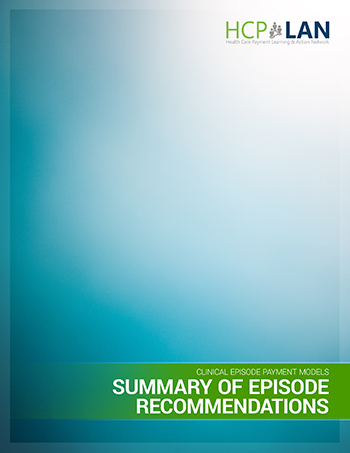

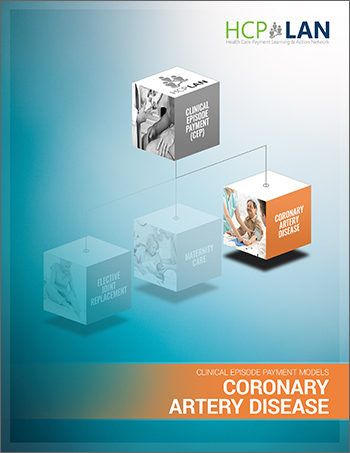
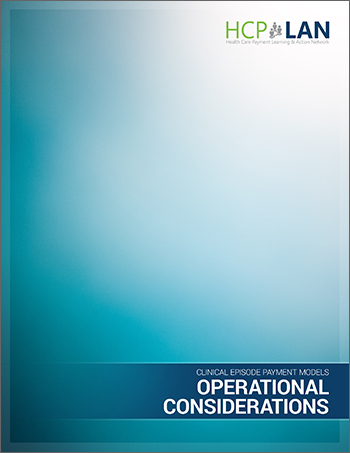
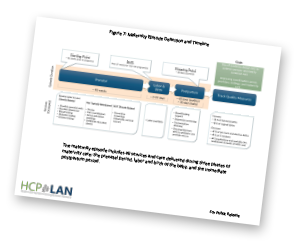
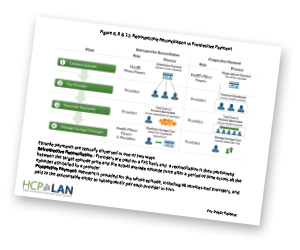



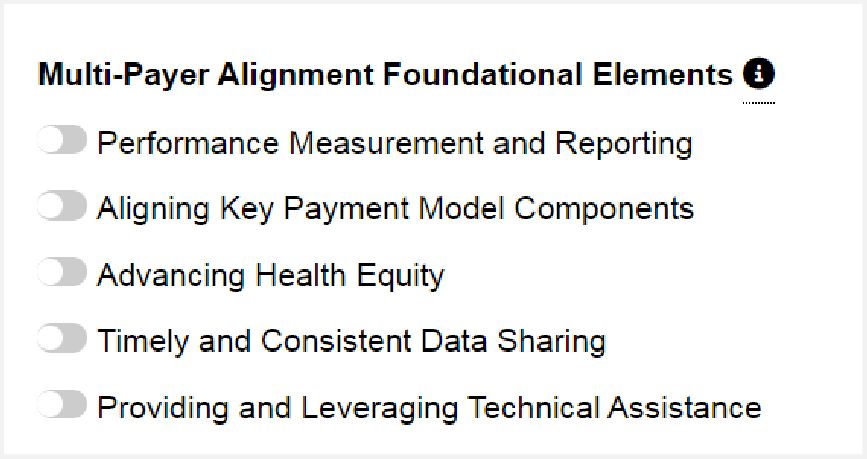
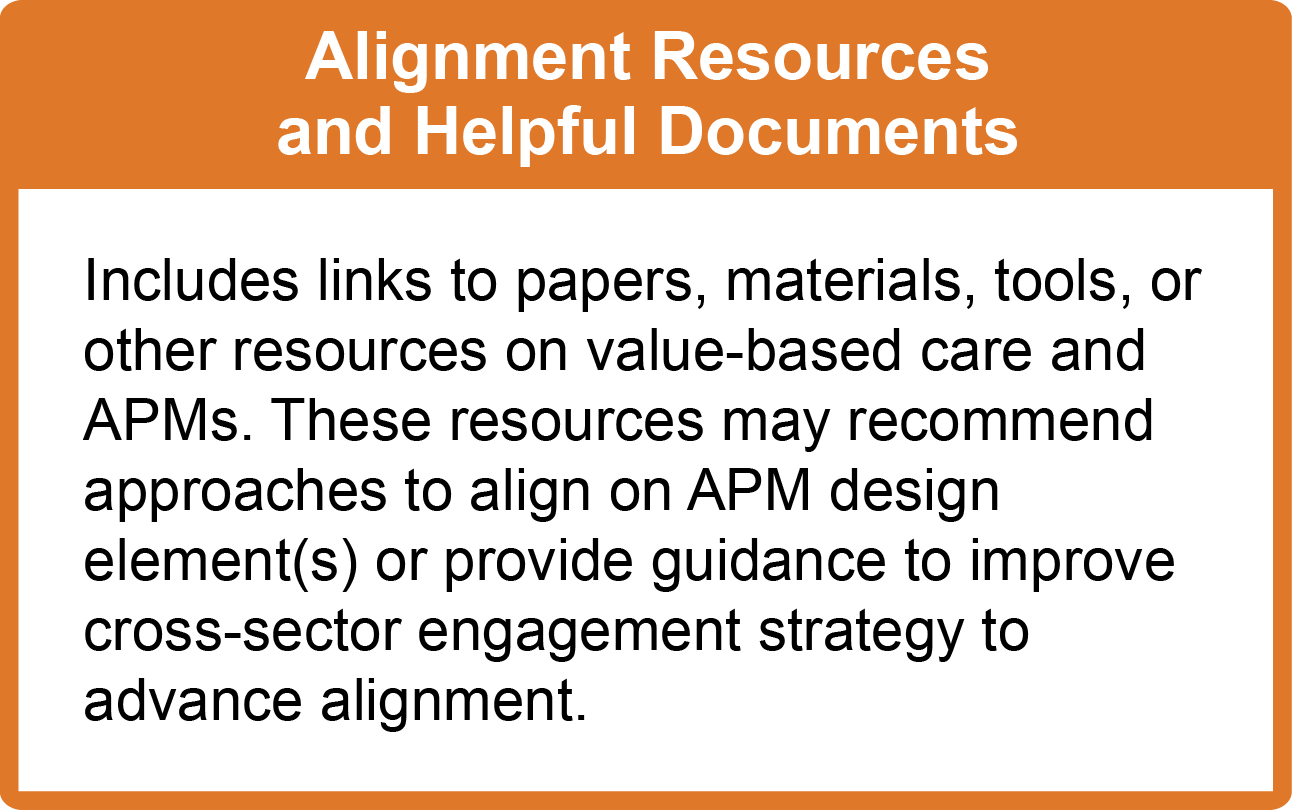







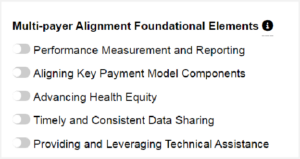




 Emily DuHamel Brower, M.B.A., is senior vice president of clinical integration and physician services for Trinity Health. Emphasizing clinical integration and payment model transformation, Ms. Brower provides strategic direction related to the evolving accountable healthcare environment with strong results. Her team is currently accountable for $10.4B of medical expense for 1.6M lives in Medicare Accountable Care Organizations (ACOs), Medicare Advantage, and Medicaid and Commercial Alternative Payment Models.
Emily DuHamel Brower, M.B.A., is senior vice president of clinical integration and physician services for Trinity Health. Emphasizing clinical integration and payment model transformation, Ms. Brower provides strategic direction related to the evolving accountable healthcare environment with strong results. Her team is currently accountable for $10.4B of medical expense for 1.6M lives in Medicare Accountable Care Organizations (ACOs), Medicare Advantage, and Medicaid and Commercial Alternative Payment Models. Mr. James Sinkoff is the Deputy Executive Officer and Chief Financial Officer for Sun River Health (formerly known as Hudson River HealthCare), and the Chief Executive Officer of Solutions 4 Community Health (S4CH); an MSO serving FQHCs and private physician practices.
Mr. James Sinkoff is the Deputy Executive Officer and Chief Financial Officer for Sun River Health (formerly known as Hudson River HealthCare), and the Chief Executive Officer of Solutions 4 Community Health (S4CH); an MSO serving FQHCs and private physician practices. Victor is the Chief Medical Officer for TennCare, Tennessee’s Medicaid Agency. At TennCare, Victor leads the medical office to ensure quality and effective delivery of medical, pharmacy, and dental services to its members. He also leads TennCare’s opioid epidemic strategy, social determinants of health, and practice transformation initiatives across the agency. Prior to joining TennCare, Victor worked at Evolent Health supporting value-based population health care delivery. In 2013, Victor served as a White House Fellow to the Secretary of Health and Human Services. Victor completed his Internal Medicine Residency at Emory University still practices clinically as an internist in the Veteran’s Affairs Health System.
Victor is the Chief Medical Officer for TennCare, Tennessee’s Medicaid Agency. At TennCare, Victor leads the medical office to ensure quality and effective delivery of medical, pharmacy, and dental services to its members. He also leads TennCare’s opioid epidemic strategy, social determinants of health, and practice transformation initiatives across the agency. Prior to joining TennCare, Victor worked at Evolent Health supporting value-based population health care delivery. In 2013, Victor served as a White House Fellow to the Secretary of Health and Human Services. Victor completed his Internal Medicine Residency at Emory University still practices clinically as an internist in the Veteran’s Affairs Health System. Dr. Brandon G. Wilson, DrPH, MHA (he, him, his) joined Community Catalyst as the Director of the Center for Consumer Engagement in Health Innovation, where he leads the Center in bringing the community’s experience to the forefront of health systems transformation and health reform efforts, in order to deliver better care, better value and better health for every community, particularly vulnerable and historically underserved populations. The Center works directly with community advocates around the country to increase the skills and power they have to establish an effective voice at all levels of the health care system. The Center collaborates with innovative health plans, hospitals and providers to incorporate communities and their lived experience into the design of systems of care. The Center also works with state and federal policymakers to spur change that makes the health system more responsive to communities. And it provides consulting services to health plans, provider groups and other health care organizations to help them create meaningful structures for engagement with their communities.
Dr. Brandon G. Wilson, DrPH, MHA (he, him, his) joined Community Catalyst as the Director of the Center for Consumer Engagement in Health Innovation, where he leads the Center in bringing the community’s experience to the forefront of health systems transformation and health reform efforts, in order to deliver better care, better value and better health for every community, particularly vulnerable and historically underserved populations. The Center works directly with community advocates around the country to increase the skills and power they have to establish an effective voice at all levels of the health care system. The Center collaborates with innovative health plans, hospitals and providers to incorporate communities and their lived experience into the design of systems of care. The Center also works with state and federal policymakers to spur change that makes the health system more responsive to communities. And it provides consulting services to health plans, provider groups and other health care organizations to help them create meaningful structures for engagement with their communities. Tamara Ward is the SVP of Insurance Business Operations at Oscar Health, where she leads the National Network Contracting Strategy and Market Expansion & Readiness. Prior to Oscar she served as VP of Managed Care & Network Operations at TriHealth in Southwest Ohio. With over 15 years of progressive health care experience, she has been instrumental driving collaborative payer provider strategies, improving insurance operations, and building high value networks through her various roles with UHC and other large provider health systems. Her breadth and depth of experience and interest-based approach has allowed her to have success solving some of the most complex issues our industry faces today. Tam is passionate about driving change for marginalized communities, developing Oscar’s Culturally Competent Care Program- reducing healthcare disparities and improving access for the underserved population. Tamara holds a B.A. from the University of Cincinnati’s and M.B.A from Miami University.
Tamara Ward is the SVP of Insurance Business Operations at Oscar Health, where she leads the National Network Contracting Strategy and Market Expansion & Readiness. Prior to Oscar she served as VP of Managed Care & Network Operations at TriHealth in Southwest Ohio. With over 15 years of progressive health care experience, she has been instrumental driving collaborative payer provider strategies, improving insurance operations, and building high value networks through her various roles with UHC and other large provider health systems. Her breadth and depth of experience and interest-based approach has allowed her to have success solving some of the most complex issues our industry faces today. Tam is passionate about driving change for marginalized communities, developing Oscar’s Culturally Competent Care Program- reducing healthcare disparities and improving access for the underserved population. Tamara holds a B.A. from the University of Cincinnati’s and M.B.A from Miami University.


 Dr. Peter Walsh joined the Colorado Department of Health Care Policy and Financing as the Chief Medical Officer on December 1, 2020. Prior to joining HCPF, Dr. Walsh served as a Hospital Field Representative/Surveyor at the Joint Commission, headquartered in Oakbrook Terrace, Illinois.
Dr. Peter Walsh joined the Colorado Department of Health Care Policy and Financing as the Chief Medical Officer on December 1, 2020. Prior to joining HCPF, Dr. Walsh served as a Hospital Field Representative/Surveyor at the Joint Commission, headquartered in Oakbrook Terrace, Illinois.








